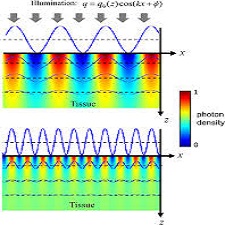توضیحات
چکیده
تغيير نرخ ارز، مجموعهاي از تغييرات متفاوت و حتي متضاد را در بخش خارجي و داخلي اقتصاد به همراه دارد كه برآيند آن ميتواند عملكرد اقتصاد كشور را تحت تاثير مثبت يا منفي قرار دهد. تعيين نرخ ارز از يك طرف نقش موثري در صادرات و واردات و به تبع آن تنظيم و تعديل تراز تجاري و تراز پرداختهاي كشور دارد و از طرف ديگر از نقش موثري در تعيين قدرت رقابتي توليدكنندگان داخلي در برابر رقباي خارجي در بازارهاي داخلي و خارجي و به تبع آن تعيين ميزان توليد و اشتغال برخوردار است. تعيين نرخ ارز همچنين ميتواند بر سطح عمومي قيمتها و به تبع آن تورم نيز موثر باشد. بنابراين با توجه به پيامدهاي گسترده تغيير نرخ ارز براي عملكرد اقتصاد ايران، مديريت نرخ ارز اهميت بسيار بالايي دارد. اين امر در شرايط فعلي اقتصاد كشور، به خصوص پس از اجراي طرح هدفمندكردن يارانهها، افزايش تحريمهاي اقتصادي، جهش نرخ غيررسمي ارز در بازار آزاد و بازگشت به نظام ارزي دونرخي اهميت بيشتري نيز يافته است. مساله مهمي كه اكنون سياستگذاران اقتصاد ايران در مورد مديريت نرخ ارز با آن مواجهند، اين است كه در آينده، نرخ ارز بايد در چه مسيري هدايت شود؟ پاسخ به اين سوال از يك طرف نيازمند بررسي سازوكار مديريت نرخ ارز در اقتصاد ايران و از طرف ديگر نيازمند تعيين مسير بهينه نرخ ارز در كشور است. تعيين مسير بهينه نرخ ارز نيز نيازمند بررسي پيامدهاي ناشي از مديريت نرخ ارز و تعيين اهداف سياست ارزي است. پس از تعيين مسير بهينه نرخ ارز و بررسي سازوكار مديريت نرخ ارز، ميتوان سياست ارزي مناسب را بر اساس اهداف سياست ارزي و ابزارهاي در دسترس جهت هدايت نرخ ارز به سوي مسير بهينه طراحي كرد. اين چارچوب اصلي جهت مديريت نرخ ارز در اقتصاد ايران در نمودار 1 نشان داده شده است. در ادامه ابتدا به بررسي مسير نرخ ارز در دوران پس از جنگ ميپردازيم.
ABSTRACT
Exchange rate fluctuations bring about a series of divergent and even contradictory changes in the external and internal sectors of the economy, the result of which can positively or negatively affect the performance of the country’s economy. Currency exchange on one hand plays an effective role in export and import and consequently regulates trade balance and payments balance of the country and on the other hand plays an effective role in determining the domestic producers’ competitive power against foreign competitors in domestic and foreign markets and to Its consequence is to determine the amount of production and employment. Currency exchange rates can also affect the general level of prices and consequently inflation. Therefore, given the widespread consequences of exchange rate change for the performance of the Iranian economy, exchange rate management is of paramount importance. This has become even more important in the current state of the economy, especially after the implementation of targeted subsidies, increased economic sanctions, the informal exchange rate jump in the free market, and the return to the two-currency currency system. The important issue that Iranian policymakers are now faced with in managing exchange rates is, in what future should the exchange rate be guided? The answer to this question on the one hand needs to study the mechanism of exchange rate management in the Iranian economy and on the other hand it needs to determine the optimal exchange rate path in the country. Determining the optimal path of the exchange rate also requires examining the consequences of exchange rate management and defining foreign exchange policy goals. After determining the optimal exchange rate path and examining the exchange rate management mechanism, the appropriate exchange rate policy can be designed based on the exchange rate policy objectives and the available tools to guide the exchange rate toward the optimal path. The main framework for managing the exchange rate in the Iranian economy is shown in Figure 1. Let us first consider the exchange rate path in the post-war era.
Year: ۲۰۱۶
Source : ۰
By : ۰
File Information: persian Language/ 14 Page / size: 86.51 KB
سال : ۱۳۹۵
منبع : ۰
کاری از : ۰
اطلاعات فایل : زبان فارسی / 14 صفحه / حجم : KB 86.51










نقد و بررسیها
هنوز بررسیای ثبت نشده است.